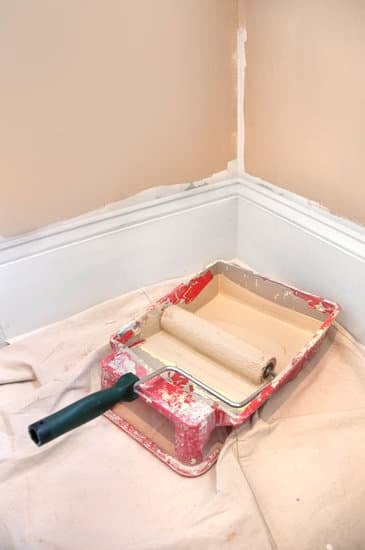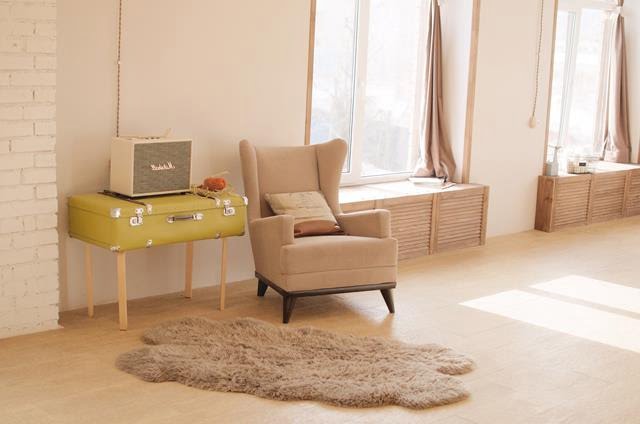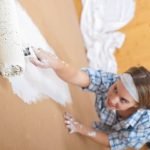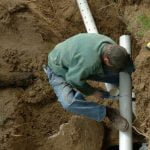Are home improvement loans secured? Home improvement loans are an essential financial resource for homeowners looking to renovate or upgrade their properties. Securing a loan for such projects can have numerous advantages, including lower interest rates and higher loan amounts. In this article, we will explore the concept of home improvement loans and the benefits of securing one, along with the various types of loans available and the process involved in securing them.
When it comes to home improvement projects, many homeowners turn to loans to fund their endeavors. There are different types of home improvement loans to consider, such as personal loans, home equity loans, and home equity lines of credit. However, one important aspect to consider is whether these loans are secured or unsecured.
Secured home improvement loans require collateral, which can impact the approval process and offer potential benefits and drawbacks compared to unsecured options. Understanding the differences between these types of loans is crucial for making informed financial decisions when it comes to improving your living space. In the following sections, we will delve into the details of secured and unsecured home improvement loans, including their requirements, eligibility criteria, interest rates, and risks associated with each option.
Types of Home Improvement Loans
When it comes to financing home improvement projects, there are several options to consider. Understanding the different types of home improvement loans available can help homeowners make informed decisions about their financing needs. Here are the main types of home improvement loans:
1. Personal Loans: Personal loans are unsecured loans that can be used for a variety of purposes, including home improvements. They do not require collateral and are based on the borrower’s creditworthiness. These loans typically have fixed interest rates and repayment terms, making them a predictable option for funding smaller projects.
2. Home Equity Loans: Home equity loans allow homeowners to borrow a lump sum of money using their home’s equity as collateral. The loan is paid back in fixed monthly payments over a set period of time at a fixed interest rate. This type of loan is ideal for larger renovation projects with predictable costs.
3. Home Equity Lines of Credit (HELOC): A HELOC is a revolving line of credit that allows homeowners to borrow against their home’s equity as needed. It works similarly to a credit card, allowing borrowers to withdraw funds up to a certain limit and only pay interest on the amount borrowed. This type of loan is flexible and can be used for ongoing or multiple home improvement projects.
Each type of home improvement loan has its own benefits and drawbacks, so it’s important for homeowners to carefully consider their financial situation and project needs before deciding which loan is right for them. Consulting with a financial advisor or loan specialist can also help in making an informed decision about the best financing option for home improvements.
Secured Home Improvement Loans
Requirements for Securing a Loan
In order to secure a home improvement loan, borrowers must have valuable assets that can be used as collateral. This typically includes home equity, which is the difference between the market value of the home and the amount still owed on the mortgage.
Lenders also consider the borrower’s credit score, income, and debts when evaluating whether they are eligible for a secured loan. Additionally, borrowers may need to provide documentation such as property appraisals, pay stubs, and tax returns to support their application.
Benefits and Drawbacks of Securing a Loan
One of the main benefits of securing a home improvement loan is that it often comes with lower interest rates compared to unsecured loans. This can result in significant savings over time for borrowers. Additionally, secured loans typically allow for higher loan amounts and longer repayment terms, making it easier for homeowners to finance large renovation projects.
However, there are drawbacks to consider as well. For example, using one’s home as collateral puts it at risk in case of default on the loan. Additionally, borrowers with poor credit may have difficulty qualifying for a secured loan.
Ultimately, securing a home improvement loan can be an excellent option for homeowners looking to fund renovation projects at favorable terms. However, it is important for borrowers to carefully weigh the benefits against potential risks before deciding if this is the right choice for their financial situation and goals.
Unsecured Home Improvement Loans
When exploring financing options for home improvement projects, homeowners may come across unsecured home improvement loans as an alternative to secured loans. Unlike secured loans that require collateral, unsecured loans do not necessitate any asset to secure the loan amount. Instead, lenders rely on the borrower’s creditworthiness and income to approve the loan.
Unsecured home improvement loans typically have higher interest rates compared to secured loans. This is because lenders consider them riskier since there is no collateral involved. Additionally, the eligibility criteria for unsecured loans are often stricter, with a focus on the borrower’s credit score and financial stability. Due to these factors, borrowers might find it more challenging to qualify for an unsecured home improvement loan compared to a secured one.
However, despite these potential drawbacks, unsecured home improvement loans offer some advantages. For instance, they eliminate the need for collateral, reducing the risk of losing valuable assets in case of default. Furthermore, the approval process for unsecured loans is usually quicker than secured ones since there is no need for appraisals or assessments of collateral.
| Secured Loan | Unsecured Loan |
|---|---|
| Requires collateral | No collateral required |
| Lowers interest rates | Higher interest rates |
| Easier eligibility criteria | Stricter eligibility criteria based on credit score and income |
Collateral for Secured Loans
When securing a home improvement loan, it’s important to understand what types of assets can be used as collateral. The most common types of collateral for secured home improvement loans include the home itself, vehicles, savings accounts, and other valuable properties such as jewelry or art. The use of collateral provides a level of security for the lender, reducing the risk and enabling them to offer lower interest rates and higher loan amounts.
Using your home as collateral for a secured home improvement loan is quite common. This is known as a home equity loan or a home equity line of credit (HELOC). With these types of loans, the equity in your home serves as collateral, making it possible to borrow a large sum of money at a lower interest rate compared to unsecured loans.
However, using your home as collateral means that you are putting that asset at risk. If you default on the loan, you could lose your home.
While using collateral for a secured loan offers benefits such as lower interest rates and larger loan amounts, there are also risks involved. If you fail to make payments on the loan, you could lose the assets that were used as collateral.
Furthermore, if the value of the collateral decreases significantly during the term of the loan, you may still be responsible for repaying the full amount borrowed. It’s crucial to carefully consider these risks before deciding to use valuable assets as collateral for a secured home improvement loan.
| Collateral Type | Risks |
|---|---|
| Home Equity | Possibility of losing your home if you default on payments |
| Vehicles | Risk of losing your vehicle if payments are not made |
| Savings Accounts/Valuables | Potential loss of savings or valuable items if unable to repay the loan |
Secured Loan Process
When applying for a secured home improvement loan, it is important to understand the process involved in securing the loan. This section will provide an overview of what to expect when applying for a secured home improvement loan, including the necessary paperwork, credit checks, and the approval process.
Paperwork and Documentation
The first step in applying for a secured home improvement loan is gathering the required paperwork and documentation. This typically includes proof of income, bank statements, tax returns, and any other financial documentation that may be requested by the lender. Additionally, you may need to provide details about the specific home improvement project you intend to undertake, including cost estimates and contractor information.
Credit Checks
Once you have submitted the necessary paperwork, the lender will likely conduct a thorough credit check to assess your creditworthiness. This will involve reviewing your credit score, payment history, outstanding debts, and other relevant financial information. A higher credit score can increase your chances of approval and may also result in more favorable loan terms such as lower interest rates.
Approval Process
After completing the paperwork and credit check process, the lender will review your application to determine whether you qualify for a secured home improvement loan. Factors such as income stability, debt-to-income ratio, and the value of your collateral will be taken into consideration during the approval process. If approved, you will receive the terms of the loan including the interest rate, loan amount, repayment period, and any applicable fees.
Understanding these steps in securing a home improvement loan can help you prepare for what to expect during the application process. It’s essential to compare offers from different lenders to find the best terms that suit your financial needs before making any commitments.
This section should provide valuable insights into how individuals can navigate through securing a home improvement loan while being informed on what is needed throughout this process.
By relying on this information individuals are better positioned when considering options for doing upgrades on their homes by getting loans for renovations while having valuable advice that they need.Eliminate repetition>}’s obvious that obtaining information on secured loans helps not only with acceptance but also with being knowledgeable since it}’ll aid in making good decisions with regards suitability concerning one}’s finances.
Benefits of Secured Home Improvement Loans
Securing a home improvement loan can offer several advantages that make it a desirable option for homeowners looking to renovate or remodel their property. Here are some of the benefits of securing a loan for home improvements:
- Lower Interest Rates: Secured home improvement loans often come with lower interest rates compared to unsecured loans. This is because the lender has the security of collateral, such as your home or other assets, which reduces their risk.
- Higher Loan Amounts: With a secured loan, you may be able to borrow a larger amount of money than with an unsecured loan. This can be beneficial if you have substantial renovation or remodeling plans and need access to significant funds.
- Longer Repayment Terms: Securing a home improvement loan can also result in longer repayment terms. This means that you’ll have more time to pay off the loan, which can help make monthly payments more manageable and less financially burdensome.
In addition to these financial benefits, secured home improvement loans may also offer more flexibility in terms of eligibility requirements. For example, individuals with lower credit scores or those who may not qualify for an unsecured loan might still be able to secure financing by using their property as collateral.
Ultimately, when considering securing a home improvement loan, it’s essential to weigh the potential advantages against the risks involved and carefully assess your financial situation before making a decision.
Risks of Secured Home Improvement Loans
Securing a home improvement loan is a common practice for homeowners looking to finance renovation projects. However, it’s important to be aware of the potential risks and downsides associated with secured home improvement loans. One of the primary risks of securing a home improvement loan is the risk of losing collateral.
When you secure a loan with collateral, such as your home or other valuable assets, you are essentially putting those assets at risk. If you are unable to make payments on the loan, the lender may have the right to seize and sell your collateral to recoup their losses.
Another potential downside of securing a home improvement loan is the impact it can have on your credit score. When you apply for a secured loan, the lender will typically conduct a hard credit inquiry, which can temporarily lower your credit score.
Additionally, if you are unable to make payments on the loan and default, it will negatively impact your credit score in the long term. This can make it more difficult to qualify for future loans or lines of credit.
It’s important for homeowners to carefully consider these risks before securing a home improvement loan. While securing a loan can offer benefits such as lower interest rates and higher loan amounts, it’s essential to weigh these benefits against the potential downsides and ensure that you are able to responsibly manage and repay the loan without putting your assets or credit at risk.
Consulting with a financial advisor or mortgage professional can also provide valuable guidance in making an informed decision about securing a home improvement loan.
Conclusion
In conclusion, securing a home improvement loan can be a beneficial option for homeowners looking to renovate or upgrade their properties. Throughout this article, we have discussed the different types of home improvement loans available, the process of securing a loan, and the benefits and risks associated with secured loans. After considering these key points, it is important for individuals to carefully weigh their options and make an informed decision when considering a secured home improvement loan.
When contemplating whether to secure a home improvement loan, it is essential for homeowners to evaluate their financial situation and consider the potential risks involved in using collateral. While secured loans often offer lower interest rates and higher loan amounts, there is also the possibility of losing valuable assets if repayment becomes challenging.
It is advisable for individuals to consult with financial advisors or loan officers to thoroughly understand the terms and conditions of secured loans before making a final decision.
Ultimately, securing a home improvement loan can provide the necessary funds to complete desired renovations or upgrades. However, it is crucial for homeowners to conduct thorough research, consider all available options, and carefully assess their ability to repay the loan before moving forward with securing a home improvement loan. By taking these steps and making informed choices, individuals can make the most out of their investment in home improvements while minimizing potential financial risks.
Frequently Asked Questions
Is a Renovation Loan Secured or Unsecured?
A renovation loan can be either secured or unsecured. A secured renovation loan is backed by collateral, such as a property or other valuable asset, while an unsecured renovation loan does not require any collateral.
How Do You Know if a Loan Is Secured or Unsecured?
You can determine if a loan is secured or unsecured by examining the terms and conditions provided by the lender. If the loan requires collateral, it is likely to be a secured loan. On the other hand, if no collateral is needed and the approval is based on creditworthiness, it is likely to be an unsecured loan.
Is a Home Loan Fully Secured?
A home loan can be fully secured if it is backed by a mortgage on the property being purchased or refinanced. In this case, the home itself serves as collateral for the loan, making it a fully secured debt. This provides additional reassurance to the lender and may offer more favorable terms for the borrower compared to an unsecured loan.

I’m thrilled to have you here as a part of the Remodeling Top community. This is where my journey as an architect and remodeling enthusiast intersects with your passion for transforming houses into dream homes.





